Question 1.
Match the following:

Answer:

Visit for most accurate Class 8 Social Science NCERT Solutions prepared by expert trainers based on CBSE syllabus.
Question 2.
Fill in the blanks:
(a) The British conquest of Bengal began with the Battle of Plassey
(b) Haidar Ali and Tipu Sultan were the rulers of Mysore
(c) Dalhousie implemented the Doctrine of Lapse
(d) Maratha kingdoms were located mainly in the western part of India.
Question 3.
State whether True or False:
(a) The Mughal empire became stronger in the eighteenth century False
(b) The English East India Company was the only European Company that traded with India.False
(c) Maharaja Ranjit Singh was the ruler of Punjab.True
(d) The British did hot introduce administrative changes in the territories they conquered. False
Question 4.
What attracted European trading companies to India?
Answer:
The European Companies saw great opportunities in trade with India. They could buy goods at a cheaper rate in India and carry them back to Europe to sell at a higher price. This opportunity attracted them to India.
Question 5.
What were the areas of conflict between the Bengal nawabs and the East India Company?
Answer:
Areas of conflict between the Nawabs of Bengal and the East India Company:
- Requests to grant concessions to Company.
- The demand of large tributes from the Company for the right to trade.
- Denial of right to minting (making) coins.
- Stoppage of fortification expansion.
- Nawab claimed that the company was depriving the Bengal government of a huge amount of revenue.
- Undermining the authority of the nawab.
Actions are taken by the Company
- Refusal to payment of taxes by the Company.
- Writing of disrespectful letters by the Company.
- Trying to humiliate the nawab and his officials.
- Enlargement of settlements by the Company, Buying villages.
- The rebuilding of forts.
Question 6.
How did the assumption of Diwani benefit the East India Company?
Answer:
The assumption of Diwani benefited the East India Company in the following ways:
- The Diwani allowed the Company to use the vast revenue resources of Bengal.
- The outflow of gold and silver which the Company imported to buy goods in India was stopped.
- The revenue from Bengal now could be used to purchase cotton and silk textiles in India, maintain Company troops, and meet the cost of building the Company fort and offices at Calcutta.
Question 7.
Explain the system of “subsidiary alliance”.
Answer:
Under the subsidiary alliance;
- Indian rulers were not allowed to have their independent armed forces.
- The rulers were to be protected by the Company, but for this, they had to pay money.
- If the Indian rulers failed to make the payment, then part of their territory was to be taken away as a penalty.
Question 8.
In what way was the administration of the Company different from that of Indian rulers?
Answer:
Administration of Company was different from that of Indian Ruler
| Company’s Administration | Indian Rulers’ Administration |
| Administrative units divided into Presidencies. Three Presidencies—Bengal, Madras, and Bombay. Each Presidency ruled by Governor and districts by collectors Governor-General—the Supreme head. The presidency was further divided into districts and the collector was head of the district. |
Four parts of each kingdom—District, Pargana, Tehsil, and Villages. Controlled by zamindars and peasants. King, the supreme head. |
Question 9.
Describe the changes that occurred in the composition of the Company’s army.
Answer:
- The East India Company recruited professional soldiers in place of sawars and paidal soldiers.
- The soldiers were trained in new warfare technology in European style.
- The soldiers were armed with muskets and matchlocks.
Question 10.
After the British conquest of Bengal, Calcutta -grew from a small village to a big city. Find out about the culture, architecture, and the life of Europeans and Indians of the city during the colonial period.
Answer:
Hints: Visit the school library or get information from the internet.
Indians were influenced by the British culture, architecture, and lifestyle.
- Culture: British influence began.
- Architecture: Influenced by British Architecture (fortification of the city, churches, etc.). Rich Indians started constructing bungalows in the English style.
- Life: English education, English clothes, became be popular.
Question 11.
Collect pictures, stories, poems, and information about any of the following—the Rani of Jhansi, Mahadji Sindhia, Haidar Ali, Maharaja Ranjit Singh, Lord Dalhousie, or any other contemporary ruler of your region.
Answer:
The Rani of Jhansi: Collect information and photographs
Hints:
- Early childhood
- Early marriage
- Death of husband
- Adopted son
- Fight with British
- Died fighting with the British.
- History would always remember her.
1. Rani Of Jhansi:
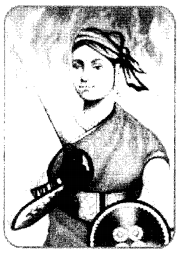
Lakshmibai was born probably on 19 November 1828 in the holy town of Varanasi in a Marathi brahmin family. Her father was Moropant Tambe. Her father worked for a court of Peshwa of Bithoor district. Peshwa brought Manikarnika up like his own daughter. The Peshwa called her “Chhabili”, which means “playful”.
She was educated at home and was more independent in her childhood than others of her age; her studies included archery, horsemanship, and self-defense.
Rani Lakshmibai was accustomed to ride on horseback accompanied by a small escort between the palace and the temple. The Rani Mahal, the place of Rani Lakshmibai, has now been converted into a museum. She died, fighting British Army bravely, to save her state Jhansi.
2. Mahadaji Shindhia
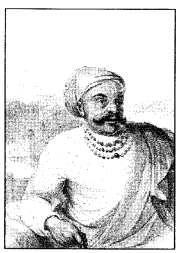
Mahadaji Shinde (1730-1794 A.D.) also spelled as Mahadji Scindia or Mahadaji Scindia, was a Maratha ruler of the state of Gwalior in central India.
Mahadaji was instrumental in resurrecting Maratha power in North India after the Third Battle of Panipat in 1761 and rose to become a trusted lieutenant of the
Peshwa, leader of the Maratha Empire. During his reign, Gwalior became the leading state in the Maratha Empire and one of the foremost military powers in India.
He accompanied Shah Alarm II (Mughal Badshah) in 1771 to Delhi in order to restore the Mughals in Delhi. The Marathas were practically at that time ruling Delhi.
He annihilated the power of Jats of Mathura and during 1772-73 and destroyed the power of Pashtun Rohillas in Rohilkhand and captured Najibabad. His role during the First Anglo Maratha War was greatest from the Maratha side since he humbled the British in Central India, single-handed, which resulted in the Treaty of Salbai in 1782, where he mediated between the Peshwa and the British.
3. Hyder Ali Of Mysore
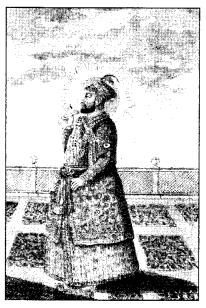
Hyder Ali (1721-1782) was the sultan and de facto ruler of the Kingdom of Mysore in southern India. Born Hyder Naik, he distinguished himself militarily, eventually drawing the attention of Mysore’s rulers. Rising from the post of Dalavayi (commander-in-chief) to Krishnaraja Wodeyar II, he came to dominate the titular monarch and the Mysore government. He became the de facto ruler of Mysore as Sarvadhikari (Chief Minister) by 1761. He offered strong anti-colonial resistance against the military advances of the British East’India Company during the First and Second Anglo Mysore Wars and he was the innovator of military use of the ‘iron-cased Mysorean rockets.
4. Maharaja Ranjit Singh
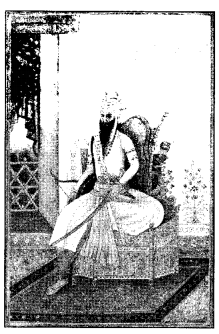
Ranjit Singh was born to Sardar Maha Singh and Raj Kaur on 13 November 1780, in Gujranwala, Punjab (now in Pakistan). As a child, he suffered from smallpox which resulted in the loss of one eye. At the time, much of Punjab was ruled by the Sikhs under a Confederate Sarbat Khalsa system, which had divided the territory among factions known as misls Ranjit Singh’s father was the commander of the Sukerchakia Misl and controlled a territory in west Punjab based around his headquarter at Gujranwala.
In 1799, Ranjit Singh captured Lahore (now in Pakistan) from the Bhangi Misl and later made it his capital. This was the first important step in his rise to power. In the following years, he brought the whole of central Punjab from the Sutlej to the Jhelum under his sway. This area includes north of Satluj (Jullundhar, Amritsar, Pathankot, etc.); and Lahore, Multan, etc. of Pakistan.
5. Lord Dalhousie
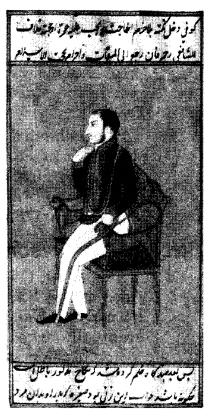
Governor-general of India (1848 to 1856): Lord Dalhousie is one the most negatively remembered personality in the rule of East India Company. He ruled India with his full efficiency from 1848 to 1856 A.D. In India, he was famous for various negative and positive reasons.
Positive:
- Starting of Railway in 1853 A.D. for the first time, between Bombay to Thane.
- Starting of postal and telegraph services in India.
- Starting of widow remarriage in 1856 A.D.
- Completion of Ganges Canal.
- Reform in Indian civil services.
Negative
- East India Company captured the princely state of Punjab in 1849 A.D.
- Second Anglo-Burmese War.
- The doctrine of Lapse (Most Controversial).
- The annexation of Awadh.
From Trade to Territory Objective Type Questions
1. Match the following:

Answer:
(i) c
(ii) d
(iii) a
(iv) b
(v) f
(vi) e
2. State whether True or False:
- The British originally came as traders. (True)
- The battle of Buxar ended in 1764. (True)
- The second Anglo Maratha war was fought in 1757. (False)
- Maratha kingdoms were located mainly in the northern part of India. (False)
- The army was known as the sepoy army during the company’s rule. (True)
3. Fill in the blanks:
- Indian rulers’ administrative units were divided into District, Parganas, and Tehsil
- The new system of justice was set up in the year 1772
- The first English factory was set up on the banks of the River Hugli
- Queen Elizabeth granted the East India Company the sole right to trade with the East.
- After the defeat at Plassey, Mir Jafar was made the Nawab.
- Lord Dalhousie devised the policy of Doctrine of Lapse.
From Trade to Territory MCQ (Multiple Choice Questions)
Choose the correct answer:
1. Which of the following was NOT the Presidency?
(a) Bengal
(b) Madras
(c) Bombay
(d) Kalikata
2. Tipu Sultan stopped export through his kingdom in
(a) 1764
(b) 1772
(c) 1785
(d) 1790
3. The first English factory was set up in the year
(a) 1600
(b) 1651
(c) 1655
(d) 1665
4. Who discovered the sea route to India in 1498?
(a) Columbus
(b) Dutch
(c) East India Company
(d) Vasco-da-Gama
5. Robert Clive committed suicide in the year
(a) 1770
(b) 1743
(c) 1767
(d) 1774
6. The Third Battle of Panipat was fought in the year
(a) 1743
(b) 1752
(c) 1761
(d) 1763
7. Rani Channamma was the ruler of
(a) Bengal
(b) Kitoor
(c) Agra
(d) Delhi
8. Haidar Ali was the ruler of
(a) Bengal
(b) Delhi
(c) Bombay
(d) Mysore
9. European trading companies were attracted to India due to
(a) cheap land
(b) cheap labour
(c) raw material like cotton silk and spices
(d) none of these
10. Competition among the companies resulted in
(a) reduced profits of companies
(b) quality of goods
(c) price became low
(d) none of these
